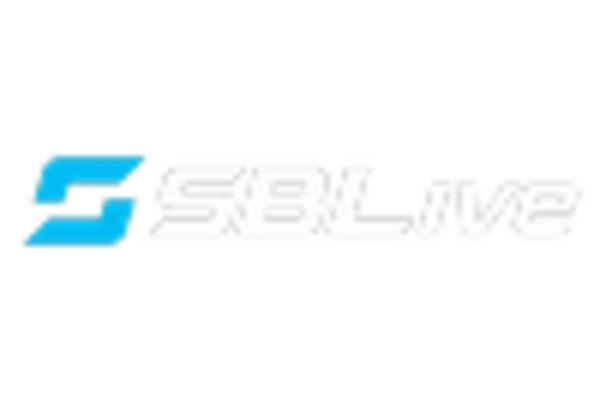The homeopathic medicine market in Germany is characterized by a competitive landscape that is both dynamic and multifaceted. Key growth drivers include an increasing consumer preference for natural remedies, a rising awareness of holistic health, and a growing body of research supporting the efficacy of homeopathic treatments. Major players such as Boiron (FR), Schwabe (DE), and Heel (DE) are strategically positioned to leverage these trends. Boiron (FR) focuses on innovation in product development, emphasizing the introduction of new formulations that cater to evolving consumer needs. Schwabe (DE) has adopted a regional expansion strategy, enhancing its distribution networks to penetrate untapped markets. Meanwhile, Heel (DE) is investing in digital transformation initiatives to improve customer engagement and streamline operations. Collectively, these strategies contribute to a competitive environment that is increasingly oriented towards consumer-centric approaches and technological advancements.
In terms of business tactics, companies are localizing manufacturing processes to reduce lead times and enhance supply chain efficiency. The market structure appears moderately fragmented, with several players vying for market share while also collaborating on various initiatives. This fragmentation allows for a diverse range of products and services, catering to different consumer segments and preferences. The collective influence of these key players shapes the market dynamics, fostering an environment where innovation and responsiveness to consumer demands are paramount.
In October 2025, Boiron (FR) announced the launch of a new line of homeopathic remedies specifically designed for children, reflecting a strategic focus on expanding its product offerings to meet the needs of younger demographics. This move is significant as it not only diversifies Boiron's portfolio but also positions the company to capture a growing segment of health-conscious parents seeking natural alternatives for their children. The introduction of these products is likely to enhance brand loyalty and increase market penetration.
In September 2025, Schwabe (DE) entered into a partnership with a leading e-commerce platform to enhance its online sales capabilities. This strategic alliance is indicative of the company's commitment to digital transformation and reflects a broader trend within the industry towards leveraging online channels for distribution. By optimizing its e-commerce presence, Schwabe aims to reach a wider audience and improve customer accessibility to its products, which may lead to increased sales and market share.
In August 2025, Heel (DE) launched an innovative AI-driven platform aimed at personalizing customer experiences through tailored product recommendations. This initiative underscores the growing importance of technology in the homeopathic sector, as companies seek to enhance customer engagement and satisfaction. By utilizing AI, Heel is likely to improve its understanding of consumer preferences, thereby refining its marketing strategies and product offerings.
As of November 2025, current competitive trends in the homeopathic medicine market include a pronounced shift towards digitalization, sustainability, and the integration of advanced technologies such as AI. Strategic alliances are increasingly shaping the landscape, enabling companies to pool resources and expertise to enhance their competitive positioning. Looking ahead, it appears that competitive differentiation will evolve from traditional price-based competition to a focus on innovation, technological advancements, and supply chain reliability. This shift may ultimately redefine how companies engage with consumers and position their products in a rapidly changing market.

















Leave a Comment